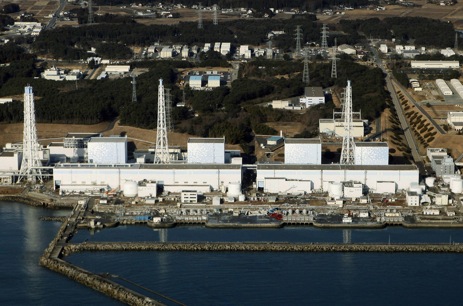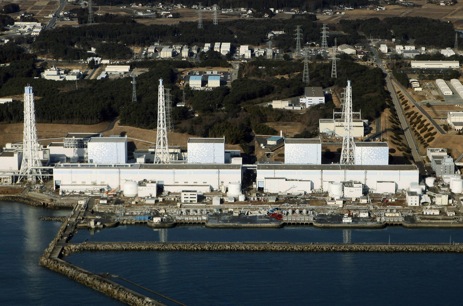One reason the United States isn’t rushing to build new nuclear power plants is that they’re expensive, especially so in an era of cheap natural gas. Another is that we haven’t figured out what to do with the resulting nuclear waste, which most elected officials aren’t eager to have in their districts.
And then there’s the third reason: Nuclear energy scares people. This week’s news brings us two reminders of why.

The reactors at Fukushima.
In Fukushima, Japan, the first possible health effects of the 2011 meltdown have been seen in humans. Teenagers, to be specific. From The Japan Times:
A Fukushima Prefectural Government panel said Wednesday that two people who were 18 or younger when the triple-meltdown crisis started at the Fukushima No. 1 atomic complex in March 2011 have been diagnosed with thyroid cancer, bringing the total cases to three.
Reporting at a meeting on the health impact from the catastrophe, professor Shinichi Suzuki of Fukushima Medical University said it is too early to link the cases to the nuclear disaster, because it took at least four to five years for thyroid cancer to be detected after the Chernobyl meltdown calamity that started in 1986. …
Radioactive iodine released in fallout tends to accumulate in thyroid glands, particularly in young people. In the Chernobyl disaster, a noticeable increase in thyroid cancer cases was detected among children in the affected area.
And speaking of Chernobyl, a structure next to the notorious plant collapsed this week, but officials say it’s nothing to worry about. From Reuters:
Part of a structure next to the damaged nuclear reactor at Ukraine’s Chernobyl power plant has collapsed, the authorities said on Wednesday, adding there were no injuries or any increase in radiation levels. …
The power plant — which stopped running its reactors in 2000 — was the site of the worst nuclear power disaster in history in April 1986 when one of its reactors exploded during a safety experiment, sending out a plume of highly radioactive fallout.
Large areas of Ukraine and neighboring Belarus were contaminated.
What’s remarkable is that this third reason to be wary of nuclear — the remote risk of meltdown — is far less important than the other two. It’s akin to worrying about the plane crashing instead of worrying about a car wreck during your long drive to the airport. But images of crumpled nuclear plants and crashed planes tend to stick with you.




